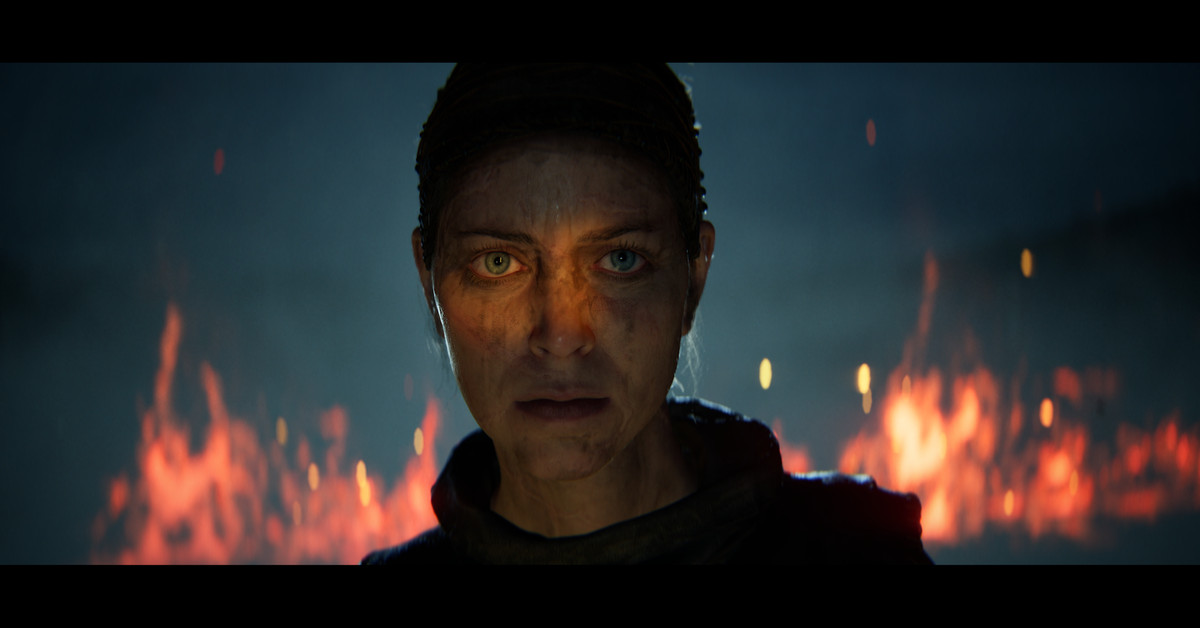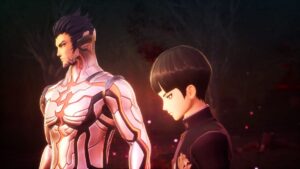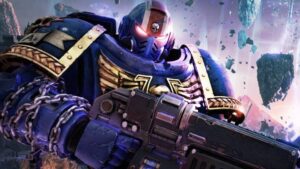in Senua’s Saga: Hellblade II, the first and only instruction the game provides is that the game is best experienced with headphones. I usually always ignore this advice. I’m not a headphones, lights off gamer. I do not need atmosphere. But for Hellblade II, I decided “Why not?” What followed was hearsay experience it excited, scared and upset the Hel(lblade) out of me.
Note: Of course, if for some reason you can’t play with headphones, the game’s subtitles and closed captions do a good job of conveying the game’s unique audio design.
in Hellblade II, the sequel to 2017 Hellblade: Senua’s Sacrifice, Senua, a Pictish warrior, embarks on another harrowing journey. Instead of venturing into the gates of Helheim, she travels north to confront the Viking raiders who are stealing and enslaving her people. On her journey, Senua is accompanied by a Homeric chorus of voices that reflect her struggle with psychosis. The Ninja Theory team made it a point to explain that they consulted with mental health experts – including a professor of psychiatry at the University of Cambridge and people living with the disorder – to describe psychosis respectfully and accurately. This manifests itself as hearing voices coming in and out of each side of my headphones. At the beginning of the game I was headbanging left or right as the voices bounced around before I finally got used to them.
There’s a richness to the vocal performance that’s lost if it’s spread out in the open instead of being beamed directly into your ears. They speak in short, staccato sentences, contextualizing Senua’s feelings about a particular encounter. When she meets someone, her voices wonder if they can be trusted. During battles, they shout encouragements and exhortations. “Get up. Get up!” or “They are so loud!” I love the voices. They remind me of my own rapid-fire internal monologue, joking about the myriad things going on in my head.
Senua’s voices also help with navigation and puzzle solving, but not so much that it becomes annoying. in Hellblade II, there’s none of that “dialogue tells you the solution” stuff that happens in other games. For the first part of the puzzle, involving a path blocked by a large symbol, voices shout “Focus!” prompting you to press the right trigger to activate Senua’s focus ability. When I got lost during a particularly confusing section in a dark forest, the voices noted only once that I was lost, then fell silent, leaving me to figure out the solution in blessed silence.
As I entered a dried up lake, I could hear water dripping all around me as the caves echoed with the sound of my breathing. The more I traveled, the darker it got and the more eerie the sounds became. My breathing slowly transformed into the guttural sounds of disturbed spirits. That should have been a problem. I hatred the sounds usually associated with horror – that crawling, screeching sound used whenever a game or movie wants to convey that something is gross and wet. But it sounds terrible Hellblade II it never crossed the threshold of off-putting or triggering for me (misophonia sufferers rejoice). Instead, the sounds were soft and quiet, but no less eerie, sounding like they were right over my shoulder in the real world.
My auditory journey with Hellblade II is not limited to sound effects and voices. Music also played an important role in creating a visceral, full-body experience with the game. There’s an encounter early on where everything combines—music, sound effects, and voices—to create a goosebump-inducing moment that I won’t spoil. The tempo of the music combined with the action on the screen created a rhythm that I could physically feel reverberating in my chest as I played. It’s a game-defining moment that really nails the skill and creativity of Hellblade IIsound team.
I’m an auditory person, a person who puts a lot of emphasis on sound and Hellblade II I felt like this was a game made for me. in Hellblade II, there is no user interface in the game. There are no instructional pop-ups that stop the action to tell you which buttons do what or how to interact with the environment. The user interface adds a layer of artificiality, reminding you that this is fiction. Without it, the game created a level of reality I’ve never experienced before, forcing me to fully inhabit Senua as a character. And with headphones in the headphones, I heard a lot more about the world and got a better sense of Senua’s unique experience in it.
Senua’s Saga: Hellblade II is now available for Xbox and Game Pass.



